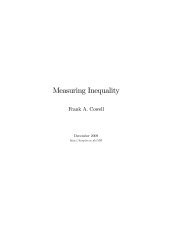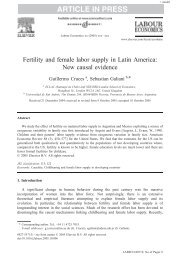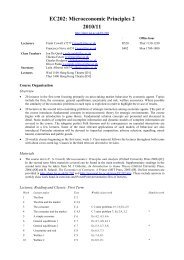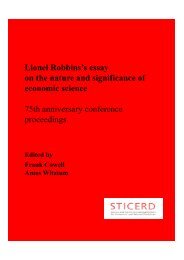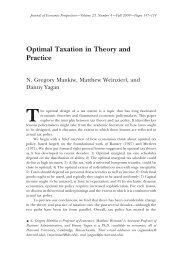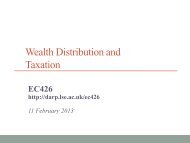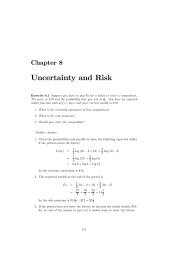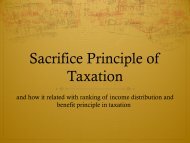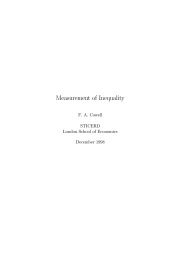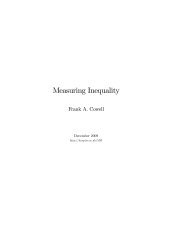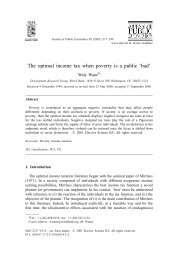Bayer, R.- C. and F. A. Cowell - DARP
Bayer, R.- C. and F. A. Cowell - DARP
Bayer, R.- C. and F. A. Cowell - DARP
You also want an ePaper? Increase the reach of your titles
YUMPU automatically turns print PDFs into web optimized ePapers that Google loves.
1 IntroductionThe behaviour of …rms is sometimes glossed over in the economic analysis oftax policy. In the analysis of tax compliance it is often omitted altogether.This omission is rather odd: tax inspectors typically use background knowledgeabout markets <strong>and</strong> industries in order to re…ne the monitoring <strong>and</strong>auditing process <strong>and</strong>, even if this knowledge is exercised in rule-of-thumbfashion, one would expect it to be in conformity with rational economic principles.Of course, …rms do make an appearance in the st<strong>and</strong>ard complianceliterature, but only in a rather specialised manner <strong>and</strong> in connection withrather specialised questions. In this paper we take a step toward a richeranalysis.What makes the tax-compliance problem di¤erent for …rms or corporationsin contrast to individual taxpayers? There are two main areas ofdi¤erence: (1) the nature of the internal organisation of corporations thatmay a¤ect important aspects of their external activity including tax reporting(Crocker <strong>and</strong> Slemrod 2005, Chen <strong>and</strong> Chu 2005), (2) the nature ofthe …rm’s external activities in the market. This paper concentrates on thesecond of these two areas <strong>and</strong> focuses on corporate tax-evasion <strong>and</strong> marketdecisions in an oligopolistic setting. We examine the impact of alternativeaudit rules on receipts from a tax on pro…ts, allowing for both complianceresponses <strong>and</strong> market responses by the …rms. Why does this alternativefocus make such a di¤erence to the analysis?Most models in the literature focus on a simple proportionate auditrule in an adapted version of the Allingham <strong>and</strong> S<strong>and</strong>mo (1972) model, asthough …rms habitually play the dual roles of producers <strong>and</strong> gamblers. 1 Inmany of the st<strong>and</strong>ard models of corporate compliance there is a fundamentalseparation result between the production <strong>and</strong> concealment activities. Thisconclusion appears to be robust to alternative assumptions about marketstructure <strong>and</strong> the speci…cations of …rms’objectives. However, taxes are notneutral in a setting where the behaviour of the tax authority depends on allthe declarations in a particular market. The tax authority can exploit thismarket-based information <strong>and</strong> so, in the light of this, we investigate the implicationsof using a more intelligent audit rule that is easily implementable.Speci…cally we focus on a relative audit rule –where the probability of auditof a particular …rm depends on that …rm’s observable behaviour relative toothers operating in the same market. 21 See Nur-tegin (2008) <strong>and</strong> Slemrod (2004) for recent overviews of the literature.2 This type of audit rule <strong>and</strong> the associated compliance behaviour has been examinedin the laboratory (Alm et al. 1993, Clark et al. 2004, Collins <strong>and</strong> Plumlee 1991). In order1



